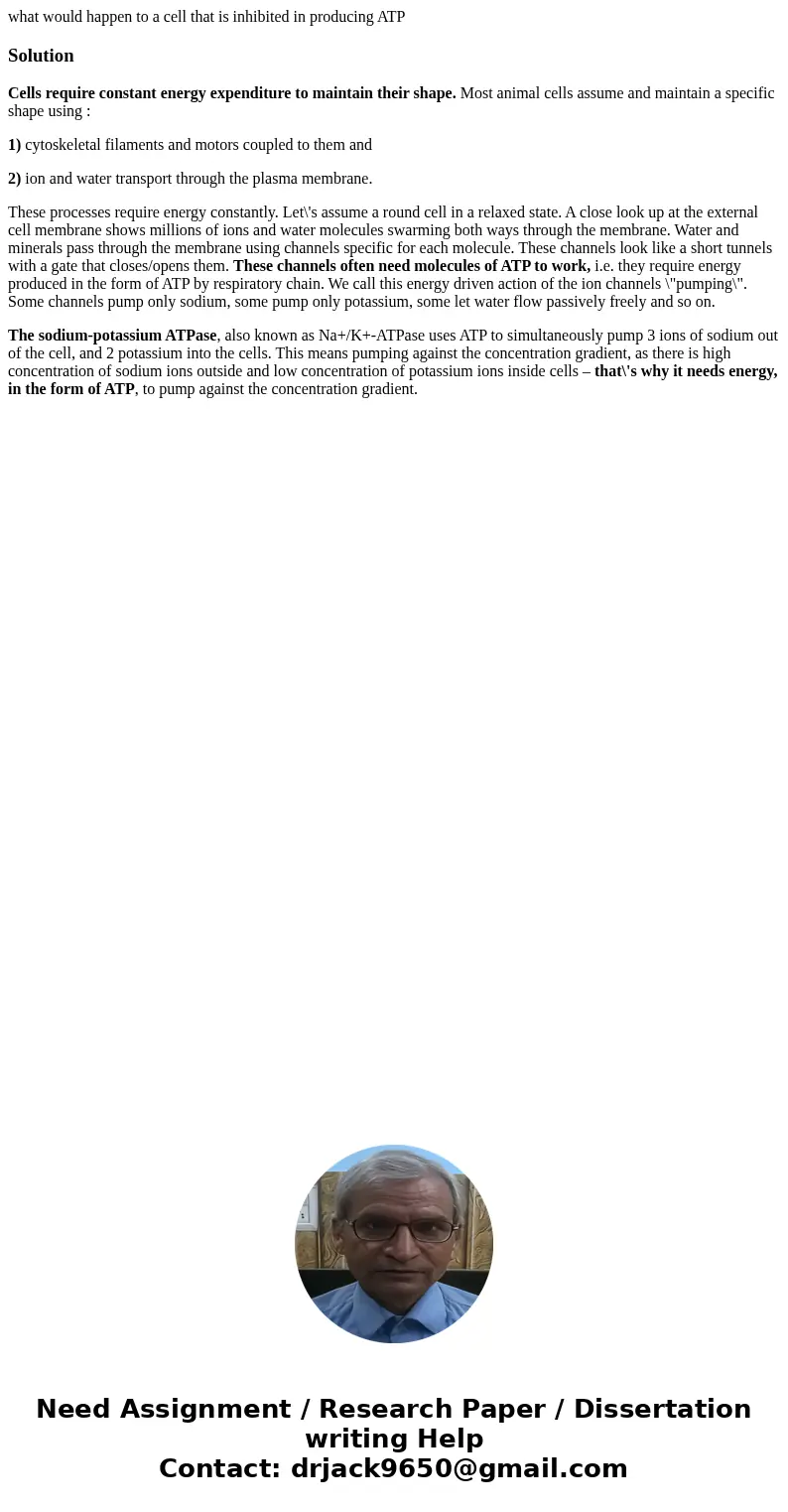what would happen to a cell that is inhibited in producing A
what would happen to a cell that is inhibited in producing ATP
Solution
Cells require constant energy expenditure to maintain their shape. Most animal cells assume and maintain a specific shape using :
1) cytoskeletal filaments and motors coupled to them and
2) ion and water transport through the plasma membrane.
These processes require energy constantly. Let\'s assume a round cell in a relaxed state. A close look up at the external cell membrane shows millions of ions and water molecules swarming both ways through the membrane. Water and minerals pass through the membrane using channels specific for each molecule. These channels look like a short tunnels with a gate that closes/opens them. These channels often need molecules of ATP to work, i.e. they require energy produced in the form of ATP by respiratory chain. We call this energy driven action of the ion channels \"pumping\". Some channels pump only sodium, some pump only potassium, some let water flow passively freely and so on.
The sodium-potassium ATPase, also known as Na+/K+-ATPase uses ATP to simultaneously pump 3 ions of sodium out of the cell, and 2 potassium into the cells. This means pumping against the concentration gradient, as there is high concentration of sodium ions outside and low concentration of potassium ions inside cells – that\'s why it needs energy, in the form of ATP, to pump against the concentration gradient.

 Homework Sourse
Homework Sourse